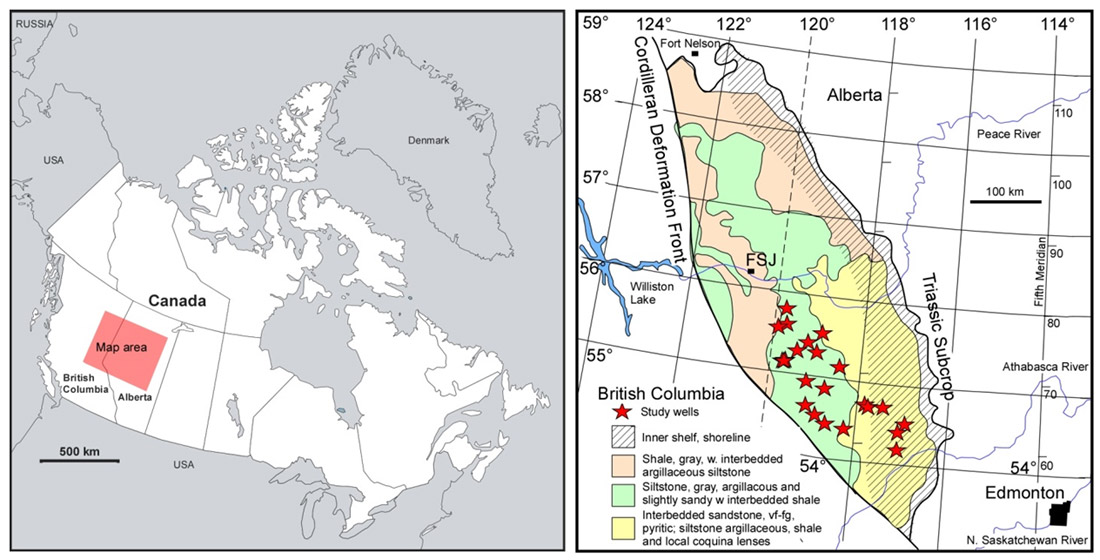Abstract: From X-ray Fluorescence (XRF) to mechanical profiling for better well completion. Valuable analytics for the exploration toolbox!
The fast pace of drilling and completion of unconventional reservoirs in North America is challenging engineers, geoscientists and petrophysicists who have to make prompt and reasonable plans for drilling completion strategies. One of the main issues is understanding the physical rock properties, such as clay and organic content, and mechanical properties or stress behaviour, in these often highly anisotropic reservoirs. In many cases, these parameters are selected or determined based only on well log data, and if available, a few data points from core derived from close or far offset wells. This practice continues despite the fact that, during drilling, valuable cuttings material is available; in addition, government archives store valuable cores or cuttings material from older, offset wells.
Here, we demonstrate that X-ray fluorescence (XRF) geochemistry profiling presents, if accurately calibrated, a unique opportunity to develop methods for high resolution petrophysical analysis and rock property modeling. Once calibration datasets are established for a formation, the methods can be applied to cuttings material from new wells, reducing the guesswork involved with petrophysical and completion modeling exercises. The main topics of this paper are that:
- Archived and new drill cuttings and core data are under-utilized with respect to geomechanical well profiling.
- Thoroughly calibrated XRF geochemical profiles of core and cuttings provide geological and mechanical rock properties, which can be incorporated into petrophysical completion models.
- Various mineral models exist, using algorithmic, linear and least squares methods to determine rock properties.
- Hardness profiling of cores support XRF derived brittleness models and allow scientists to predict the ease of hydraulic fracturing and the embedment of proppant.
- A multi-disciplinary approach and cross-methodological calibrations highlight that XRF-derived brittleness index and mechanical properties are superior to estimates based on far offset wells.
- XRF mechanical and rock property profiling can be applied to horizontal wells to identify formation issues prior to completion in order to improve successful perforation, sand placement and production.
In this study, we specifically investigated high density core profiling from the unconventional Triassic Montney Formation in Alberta, Canada. Methods and analytical analyses include geochemical and Leeb Hardness profiling, measurements of total organic content (TOC), mineralogy (X-ray diffraction), geochemistry (X-ray fluorescence), and rock mechanical analysis including Young’s Modulus (YM) and Poisson’s Ratio (PR). These were used to assess and develop the following:
- High resolution mineral and organic content profiles for the formation
- High resolution brittleness and hardness profiles
- Identification of downhole rock property complexity and physical rock property variability.
The demonstrated workflow illustrates that well-calibrated models serve as powerful tools to assess and evaluate the cuttings material of new wells, and thus obtain timely, high-resolution, accurate reservoir characteristics of vertical and horizontal wells for optimizing drilling locations, horizontal well placements and for completion stage selections. Using such an approach, geological and petrophysical parameter selection along lateral wells prior to completion is no longer guesswork.








